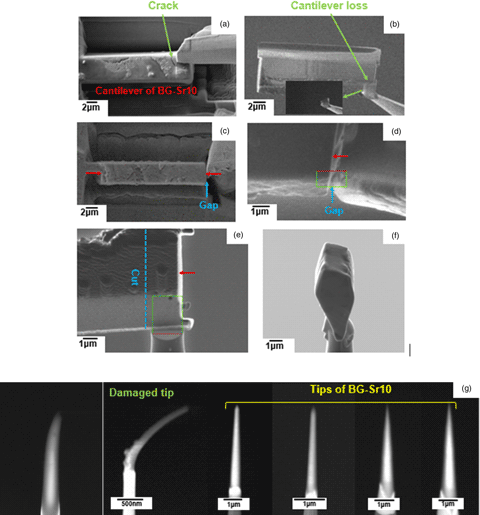Published online by Cambridge University Press: 25 October 2021

In this study, atom probe tomography (APT) was used to investigate strontium-containing bioactive glass particles (BG-Sr10) and strontium-releasing bioactive glass-based scaffolds (pSrBG), both of which are attractive biomaterials with applications in critical bone damage repair. We outline the challenges and corresponding countermeasures of this nonconductive biomaterial for APT sample preparation and experiments, such as avoiding direct contact between focussed ion beam micromanipulators and the extracted cantilever to reduce damage during liftout. Using a low imaging voltage (≤3 kV) and current (≤500 pA) in the scanning electron microscope and a low acceleration voltage (≤2 kV) and current (≤200 pA) in the focussed ion beam prevents tip bending in the final stages of annular milling. To optimize the atom probe experiment, we considered five factors: total detected hits, multiple hits, the background level, the charge-state ratio, and the accuracy of the measured compositions, to explore the optimal laser pulse for BG-Sr10 bioactive glass. We show that a stage temperature of 30 K, 200–250 pJ laser pulse energy, 0.3% detection rate, and 200 kHz pulse rate are optimized experimental parameters for bioactive glass. The use of improved experimental preparation methods and optimized parameters resulted in a 90% successful yield of pSrBG samples by APT.